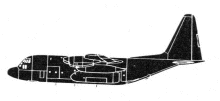Incident Overview

Description
The DHC-6-100 Twin Otter aircraft, VH-TGR, was scheduled to operated TAA flight 1369 from Mount Hagen in the Western Highlands of Papua New Guinea at 06:30 hours. Destination was Lae, with en route stops at Banz, Minj, Chimbu, Goroka and Kainantu. The service proceeded uneventfully via the first four intermediate stops and the aircraft departed Goroka for Kainantu at 08:52 hours with nine passengers, including four children, on board. The flight plan for this sector indicated that the aircraft would take 15 minutes to fly the 25 miles from Goroka to Kainantu and the proposed cruising level was 7,500 feet above mean sea level or approximately 1,500 feet above the general level of the en-route terrain. The aircraft was following the normal route from Goroka, but flying very low and just beneath the extremely low cloud that persisted in the area. Flying right at the base of the overcast, the aircraft then entered a saddle in a ridge that lay at right angles to its track. Almost immediately afterwards, the engine noise increased and the aircraft banked steeply into a turn to the left. The turn continued through about 180 degrees until the aircraft, just clearing the slopes of the northern side of the saddle, was heading back in the direction from which it had come. But before it could regain the area of lower terrain to the west of the ridge, the aircraft flew into a stand of tall trees on top of a spur in the saddle. Cutting a swathe through the trees the aircraft cleared the top of the spur itself and crashed on to a grass covered slope on its western side. CAUSE: The probable cause of the accident was that the pilot persisted with such determination or confidence in his attempts to reach his destination in the face of deteriorating weather conditions, that he did not ensure he could safely discontinue the approach at any time and still maintain visual reference to the significant terrain.
Source of Information
https://news.google.com/newspapers?id=jIVWAAAAIBAJ&sjid=HuUDAAAAIBAJ&dq=kainantu%20plane&pg=4496%2C11254788, https://news.google.com/newspapers?id=i4VWAAAAIBAJ&sjid=HuUDAAAAIBAJ&hl=fr&pg=3617%2C10870899https://news.google.com/newspapers?id=jIVWAAAAIBAJ&sjid=HuUDAAAAIBAJ&dq=kainantu%20plane&pg=4496%2C11254788, https://news.google.com/newspapers?id=i4VWAAAAIBAJ&sjid=HuUDAAAAIBAJ&hl=fr&pg=3617%2C10870899Primary Cause
Pilot’s unwavering focus on reaching destination despite deteriorating weather conditions, leading to a lack of sufficient visual reference to the terrain.Pilot’s unwavering focus on reaching destination despite deteriorating weather conditions, leading to a lack of sufficient visual reference to the terrain.Share on:



